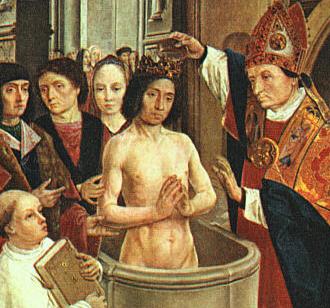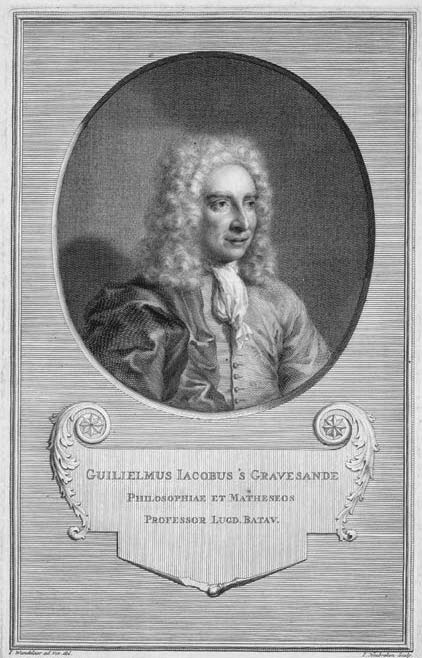|
1688 In Science
The year 1688 in science and technology included a number of events, some of which are listed here. Astronomy * The constellation '' Sceptrum Brandenburgicum'' is named by Gottfried Kirch. Exploration * A French Jesuit scientific mission led by Jean de Fontaney arrives in China. Mathematics * Simon de la Loubère introduces the Siamese method for constructing any size of ''n''-odd magic square to Western Europe. Technology * Earliest known mention of the balalaika. Births * January 29 – Emanuel Swedenborg, Swedish scientist and theologian (died 1772) * April 4 – Joseph-Nicolas Delisle, French astronomer (died 1768) * August 14 – Johann Leonhard Rost, German astronomer (died 1727) * September 26 – Willem 's Gravesande, Dutch polymath (died 1742) * November 15 – Louis Bertrand Castel, French Jesuit mathematician and physicist (died 1757) Deaths * January 28 – Ferdinand Verbiest, Flemish Jesuit astronomer in China (born 1623) * October 9 – Claude Perrault, Fren ... [...More Info...] [...Related Items...] OR: [Wikipedia] [Google] [Baidu] |
Scientist
A scientist is a person who Scientific method, researches to advance knowledge in an Branches of science, area of the natural sciences. In classical antiquity, there was no real ancient analog of a modern scientist. Instead, philosophers engaged in the philosophical study of nature called natural philosophy, a precursor of natural science. Though Thales ( 624–545 BC) was arguably the first scientist for describing how cosmic events may be seen as natural, not necessarily caused by gods,Frank N. Magill''The Ancient World: Dictionary of World Biography'', Volume 1 Routledge, 2003 it was not until the 19th century in science, 19th century that the term ''scientist'' came into regular use after it was coined by the theologian, philosopher, and historian of science William Whewell in 1833. History The roles of "scientists", and their predecessors before the emergence of modern scientific disciplines, have evolved considerably over time. Scientists of different er ... [...More Info...] [...Related Items...] OR: [Wikipedia] [Google] [Baidu] |
Louis Bertrand Castel
Louis Bertrand Castel (5 November 1688 – 11 January 1757) was a French mathematician born in Montpellier, who entered the order of the Jesuits in 1703. Having studied literature, he afterwards devoted himself entirely to mathematics and natural philosophy. After moving from Toulouse to Paris in 1720, at the behest of Bernard de Fontenelle, Castel acted as the science editor of the Jesuit ''Journal de Trévoux''. He wrote several scientific works, that which attracted most attention at the time being his (1740), or treatise on the melody of colours. He also wrote (1724), (1728), and a critical account of the system of Sir Isaac Newton in 1743. Philosophical approach Castel wrote on areas as wide-ranging as physics, mathematics, morals, aesthetics, theology and history. His philosophical approach attempted to reconcile fields and viewpoints. Castel based much of his work on Analogy, analogical thinking, seeking to understand the physical and moral worlds through the discovery ... [...More Info...] [...Related Items...] OR: [Wikipedia] [Google] [Baidu] |
1742 In Science
The year 1742 in science and technology involved some significant events. Astronomy * January 14 – Death of Edmond Halley; James Bradley succeeds him as Astronomer Royal in Great Britain. Mathematics * June – Christian Goldbach produces Goldbach's conjecture. * Colin Maclaurin publishes his ''Treatise on Fluxions'' in Great Britain, the first systematic exposition of Newton's methods. Metrology * Anders Celsius publishes his proposal for a centigrade temperature scale originated in 1741. Physiology and medicine * Surgeon Joseph Hurlock publishes his ''A Practical Treatise upon Dentition, or The breeding of teeth in children'' in London, the first treatise in English on dentition. Technology * Benjamin Robins publishes his ''New Principles of Gunnery, containing the determination of the force of gun-powder and an investigation of the difference in the resisting power of the air to swift and slow motions'' in London, containing a description of his ballistic pendulum ... [...More Info...] [...Related Items...] OR: [Wikipedia] [Google] [Baidu] |
Polymath
A polymath or polyhistor is an individual whose knowledge spans many different subjects, known to draw on complex bodies of knowledge to solve specific problems. Polymaths often prefer a specific context in which to explain their knowledge, but some are gifted at explaining abstractly and creatively. Embodying a basic tenet of Renaissance humanism that humans are limitless in their capacity for development, the concept led to the notion that people should embrace all knowledge and develop their capacities as fully as possible. This is expressed in the term Renaissance man, often applied to the Intellectual giftedness, gifted people of that age who sought to develop their abilities in all areas of accomplishment: intellectual, artistic, social, physical, and spiritual. Etymology The word polymath derives from the Ancient Greek, Greek roots ''poly-'', which means "much" or "many," and ''manthanein'', which means "to learn." Plutarch wrote that the Ancient Greek Muses, muse P ... [...More Info...] [...Related Items...] OR: [Wikipedia] [Google] [Baidu] |
Dutch People
The Dutch, or Netherlanders (Dutch language, Dutch: ) are an ethnic group native to the Netherlands. They share a common ancestry and culture and speak the Dutch language. Dutch people and their descendants are found in migrant communities worldwide, notably in Argentina, Aruba, Australia, Brazil, Canada,Based on Statistics Canada, Canada 2001 Census]Linkto Canadian statistics. Caribbean Netherlands, Curaçao, Germany, Guyana, Indonesia, New Zealand, Sint Maarten, South Africa, Suriname, and the United States.According tFactfinder.census.gov The Low Countries were situated around the border of France and the Holy Roman Empire, forming a part of their respective peripheries and the various territories of which they consisted had become virtually autonomous by the 13th century. Under the Habsburgs, the Netherlands were organised into a single administrative unit, and in the 16th and 17th centuries the Northern Netherlands gained independence from Spain as the Dutch Republic. The ... [...More Info...] [...Related Items...] OR: [Wikipedia] [Google] [Baidu] |
Willem 's Gravesande
Willem Jacob 's Gravesande (26 September 1688 – 28 February 1742) was a Dutch mathematician and natural philosopher, chiefly remembered for developing experimental demonstrations of the laws of classical mechanics and the first experimental measurement of kinetic energy. As professor of mathematics, astronomy, and philosophy at Leiden University, he helped to propagate Isaac Newton's ideas in Continental Europe. Life Born in 's-Hertogenbosch, 's Gravesande studied law at Leiden University, where he defended a thesis on suicide and earned a doctorate in 1707. He then practised law in The Hague while also participating in intellectual discussions and cultivating his interest in the mathematical sciences. His ''Essai de perspective'' ("Essay on Perspective"), published in 1711, was praised by the influential Swiss mathematician Johann Bernoulli. [...More Info...] [...Related Items...] OR: [Wikipedia] [Google] [Baidu] |
1727 In Science
The year 1727 in science and technology involved some significant events. Astronomy * Maharaja Jai Singh II begins construction of the Jantar Mantar observatory at Jaipur. Biology * Rev. Stephen Hales publishes ''Vegetable Staticks'', containing an account of key experiments in plant physiology; and makes the first measurement of blood pressure. Forssmann, Werner. Nobel Lecture in Physiology or Medicine, 1956. Mathematics * This year's French Academy of Sciences prize is based on a problem on the masting of ships: to calculate the number of masts to use and where in the ship to locate them. Pierre Bouguer gains the award for his paper ''On the masting of ships''; and two other prizes, one for his dissertation ''On the best method of observing the altitude of stars at sea'' and the other for his paper ''On the best method of observing the variation of the compass at sea''. The 19-year-old Euler enters for the prize with an essay written in 1726 and published in 1728. Optics * ... [...More Info...] [...Related Items...] OR: [Wikipedia] [Google] [Baidu] |
Germans
Germans (, ) are the natives or inhabitants of Germany, or sometimes more broadly any people who are of German descent or native speakers of the German language. The Basic Law for the Federal Republic of Germany, constitution of Germany, implemented in 1949 following the end of World War II, defines a German as a German nationality law, German citizen. During the 19th and much of the 20th century, discussions on German identity were dominated by concepts of a common language, culture, descent, and history.. "German identity developed through a long historical process that led, in the late 19th and early 20th centuries, to the definition of the German nation as both a community of descent (Volksgemeinschaft) and shared culture and experience. Today, the German language is the primary though not exclusive criterion of German identity." Today, the German language is widely seen as the primary, though not exclusive, criterion of German identity. Estimates on the total number of Germ ... [...More Info...] [...Related Items...] OR: [Wikipedia] [Google] [Baidu] |
Johann Leonhard Rost
Johann Leonhard Rost (12 February 1688 – 22 March 1727) was a German astronomer and author from Nuremberg. He wrote under the alias Meletaon. The crater Rost on the Moon is named after him. His brother Johannes Carolus Rost was a famous doctor from Nuremberg, he is mostly known to be the personal doctor of Anna Maria Franziska of Saxe-Lauenburg. Bibliography * Meletaon, "Schau-Platz der gelährten und galanten Welt", 1711. * Meletaon, "Die Unglückseelige Atalanta", 1717. * Rost, J. L., "Atlas Portatilis Coelestis", 1723. External links ''Atlas Portatilis Coelestis'', 1723- Full digital facsimile, Linda Hall Library The Linda Hall Library is a privately endowed American library of science, engineering and technology located in Kansas City, Missouri, on the grounds of a urban arboretum. It claims to be the "largest independently funded public library of sc .... Biography & Bibliography by Hans Gaab and Olaf Simons 1688 births 1727 deaths 18th-century German as ... [...More Info...] [...Related Items...] OR: [Wikipedia] [Google] [Baidu] |
1768 In Science
The year 1768 in science and technology involved some significant events. Biology * Steller's sea cow is hunted to extinction. * Josephus Nicolaus Laurenti becomes auctor of the class of reptiles through his ' on the poisonous function of reptiles and amphibians. He also publishes ' describing the olm, one of the first accounts of a cave animal in the western world. * Caspar Friedrich Wolff begins publication of "De Formatione Intestinarum" in the ''Mémoires'' of The Imperial Academy of Arts and Sciences (Saint Petersburg), a significant work in the science of embryology. * Lazzaro Spallanzani challenges the spontaneous generation of cellular life. Botany * Bougainvillea is first classified in Brazil by Philibert Commerçon, the botanist accompanying Louis Antoine de Bougainville's French Navy voyage of circumnavigation. * Henri-Louis Duhamel du Monceau's ''Traité des arbres fruitiers'' is published in Paris. Chemistry * March 17 – William Cookworthy is granted a pate ... [...More Info...] [...Related Items...] OR: [Wikipedia] [Google] [Baidu] |
Astronomer
An astronomer is a scientist in the field of astronomy who focuses on a specific question or field outside the scope of Earth. Astronomers observe astronomical objects, such as stars, planets, natural satellite, moons, comets and galaxy, galaxies – in either observational astronomy, observational (by analyzing the data) or theoretical astronomy. Examples of topics or fields astronomers study include planetary science, Sun, solar astronomy, the Star formation, origin or stellar evolution, evolution of stars, or the galaxy formation and evolution, formation of galaxies. A related but distinct subject is physical cosmology, which studies the Universe as a whole. Types Astronomers typically fall under either of two main types: observational astronomy, observational and theoretical astronomy, theoretical. Observational astronomers make direct observations of Astronomical object, celestial objects and analyze the data. In contrast, theoretical astronomers create and investigate Con ... [...More Info...] [...Related Items...] OR: [Wikipedia] [Google] [Baidu] |




